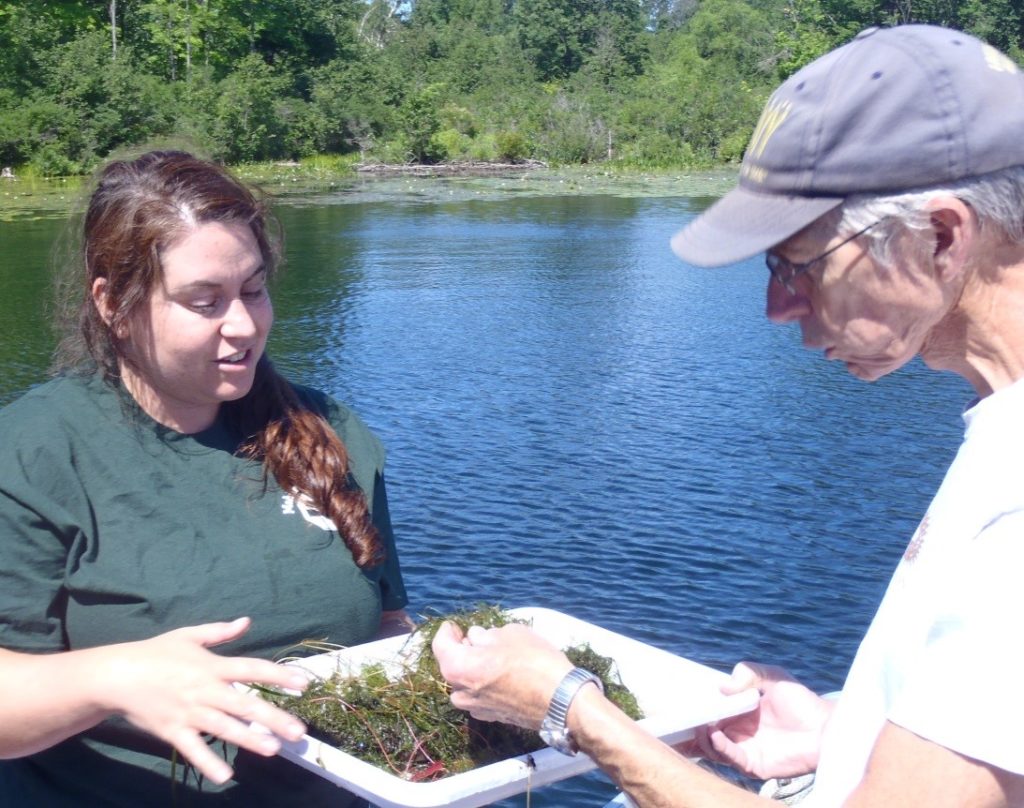What will you do to protect your lake this year? Invasive plants like starry stonewort and Eurasian watermilfoil are sneaky attackers, lurking beneath the water’s surface and growing unnoticed until they have infested acres of a lake. Given the opportunity to establish themselves, these weeds are nearly impossible to eradicate, cost thousands of dollars annually to manage, and can severely impact the health, beauty, and recreational enjoyment of your lake.

The best defense against invasive species is prevention and early detection. Effective prevention steps include following “Clean, Drain, and Dry” steps when boating and fishing, and preventing the escape or release of aquatic pets and plants from aquariums and water gardens. Early detection relies on people who can recognize the first few plants of an invasive species in a lake, before they have a chance to become established. If detected early, when numbers are low, invasive plants can often be eradicated at minimal cost.
Are you ready to become an “early detector” by joining the Exotic Aquatic Plant Watch? More than 75 lakes in Michigan have already benefited from the watchful eyes of over 100 Exotic Aquatic Plant Watch volunteers, and MiCorps staff are ready to train new volunteers for the 2017 season. Join the Exotic Aquatic Plant Watch by enrolling in the Cooperative Lakes Monitoring Program (CLMP), then attend one of the two free CLMP training sessions that will be offered this year: Friday, April 21 during the Michigan Lake and Stream Associations’ Annual Conference at Crystal Mountain near Thompsonville, or Wednesday, May 3 in Iron River. Exotic Aquatic Plant Watch trainees will learn how to identify the invasive plants that pose the highest risk to Michigan’s inland lakes, how to find them, and how to report your findings. New lakes to the program are also eligible to have a member of the MiCorps staff visit your lake to get you off to a great start!
For more information on the Exotic Aquatic Plant Watch, view the video above, visit the CLMP Lake Monitoring page, or contact Dr. Jo Latimore at latimor1@msu.edu or 517-432-1491.
Posted By: Dr. Jo Latimore, MiCorps/CLMP Staff, Michigan State University
Interested in becoming a volunteer lake monitor in 2017? It’s not too late! Enroll in the 2017 Exotic Aquatic Plant Watch (EAPW) and other lake monitoring parameters today by visiting our 2017 CLMP Enrollment Page.






